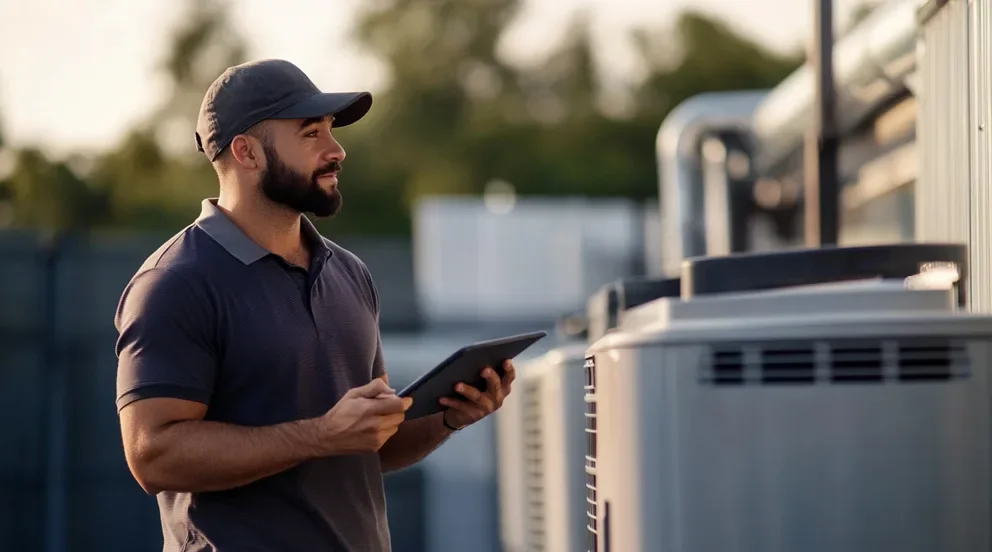The Field Operations Management System (FOMS) is a software platform that optimizes field operations. It offers real-time tracking, management, and reporting. FOMS improves processes, increases efficiency, and reduces costs through task automation and data accuracy. It works across industries like construction, utilities, telecommunications, and transportation.
FOMS streamlines field operations through features like scheduling, dispatching, fleet tracking, and inventory management. It facilitates coordination and communication between field teams and back-office operations. FOMS integrates with CRM, ERP, and accounting software for seamless data flow and decision-making.
Real-time data and analytics are a key benefit of using FOMS. Managers can monitor field operations, identify improvement areas, and make data-driven decisions. FOMS enables resource and personnel tracking, optimizing resource allocation. It provides insights into work progress, time tracking, and performance metrics for continuous improvement.
Content:
- Enhancing Safety in Field Inspections and Asset Maintenance using Drones and Robotics
- Optimizing Efficiency and Productivity in Field Operations through Drone and Robotics Integration
- Harnessing the Power of Artificial Intelligence and Drones in Asset Management and Maintenance
- Implementing Drones and Robotics for Real-Time Data Collection and Analysis in Field Operations
- Exploring the Role of Virtual Reality and Robotics in Streamlining Field Inspections and Maintenance
FOMS is an essential tool for businesses in today’s competitive market. It offers a reliable and efficient way to manage field operations. By streamlining processes, increasing efficiency, and reducing costs, FOMS transforms business operations. In this document, we will explore FOMS in detail, including its features, benefits, and transformative potential for your business. Let’s dive in!
Enhancing Safety in Field Inspections and Asset Maintenance using Drones and Robotics
By utilizing drones equipped with high-resolution cameras and specialized sensors, inspectors can now remotely access hard-to-reach areas and collect real-time data without endangering their safety. Whether it’s inspecting structures, pipelines, or overhead power lines, drones provide a bird’s-eye view that allows for comprehensive and accurate assessments.
Robotics, on the other hand, play a crucial role in asset maintenance. By employing autonomous robots that are capable of performing repetitive or dangerous tasks, maintenance teams can avoid potential hazards and increase overall efficiency. Whether it’s routine inspections, equipment repairs, or preventive maintenance, robots can handle tedious and time-consuming operations, freeing up human resources for more complex tasks.
Moreover, the integration of drones and robotics allows for seamless data collection and analysis. These technologies enable real-time monitoring, identifying potential issues before they escalate into costly problems. By detecting anomalies and conducting predictive maintenance, companies can save valuable time and resources, maximizing asset lifespan and minimizing downtime.
In summary, the integration of drones and robotics in field inspections and asset maintenance offers significant advantages. It enhances safety by minimizing human exposure to risks, optimizes productivity by automating repetitive tasks, and facilitates data collection and analysis. Embracing this technology-driven approach is a vital step towards ensuring efficient and effective management of assets while prioritizing the safety of personnel.
Optimizing Efficiency and Productivity in Field Operations through Drone and Robotics Integration
In today’s fast-paced business environment, the seamless integration of drones and robotics has emerged as a game-changer for optimizing efficiency and productivity in field operations. By leveraging these cutting-edge technologies, companies can streamline their processes, save costs, and achieve new levels of productivity.
Drones play a crucial role in various aspects of field operations. With their ability to carry out aerial surveys, capture high-resolution images, and collect valuable data, drones contribute to improved decision-making and planning. They enable accurate mapping, monitoring of construction sites, and rapid inspection of large areas, slashing the time and effort traditionally required for these tasks.
Robotics further enhance efficiency by automating repetitive and labor-intensive activities. Whether it’s loading and unloading shipments, warehouse inventory management, or performing quality control inspections, robots can handle these tasks with precision and speed. This frees up human resources to focus on more strategic and complex tasks, maximizing overall productivity.
The integration of drones and robotics also enables seamless communication and collaboration across various departments. Real-time data collected by drones can be instantly shared with on-site teams or off-site experts, facilitating faster decision-making and problem-solving. This streamlined flow of information optimizes coordination and reduces delays, allowing for quicker responses to operational challenges.
By harnessing the power of drone and robotics integration, companies can achieve unprecedented levels of efficiency and productivity in their field operations. They can streamline processes, reduce operational costs, improve decision-making, and enhance overall performance. Embracing this transformative technology is crucial for staying ahead in today’s competitive business landscape.
Harnessing the Power of Artificial Intelligence and Drones in Asset Management and Maintenance
The synergy between artificial intelligence (AI) and drones has revolutionized asset management and maintenance, offering companies unprecedented levels of efficiency, accuracy, and cost savings. By harnessing the power of these cutting-edge technologies, organizations can unlock new insights, streamline processes, and proactively address maintenance needs.
Drones equipped with AI capabilities can gather vast amounts of data quickly and accurately, yielding valuable information that was once inaccessible or time-consuming to obtain. Through advanced image recognition and data analysis algorithms, AI-powered drones can swiftly identify anomalies, potential defects, or areas requiring maintenance. This proactive approach allows companies to address issues before they escalate into costly problems, minimizing downtime and maximizing asset performance.
AI also plays a vital role in enhancing predictive maintenance strategies. By analyzing historical data and real-time information collected by drones, AI algorithms can identify patterns, predict failures, and recommend optimal maintenance schedules. This data-driven approach enables organizations to optimize their resources, reduce unplanned downtime, and extend asset lifecycles.
Furthermore, AI-powered drones facilitate improved asset documentation and management. By autonomously capturing high-resolution images and conducting surveys, drones can create accurate 3D models and virtual representations of assets. This digital record not only simplifies asset tracking and inventory management but also serves as a foundation for intelligent asset visualization, aiding in better decision-making and planning.
The combination of AI and drones in asset management and maintenance empowers organizations to be more proactive, efficient, and strategic. It allows for real-time data analysis, predictive maintenance strategies, and accurate asset documentation. By embracing this powerful duo, companies can optimize their operations, reduce costs, and maximize the lifespan and performance of their assets.
Implementing Drones and Robotics for Real-Time Data Collection and Analysis in Field Operations
In the age of digital transformation, the implementation of drones and robotics in field operations has completely changed the way companies collect and analyze data. By enabling real-time data capture and analysis, these technologies revolutionize decision-making, streamline processes, and unlock new opportunities for operational growth.
Drones equipped with advanced sensors and imaging technologies have redefined the concept of data collection in field operations. Whether it’s aerial surveillance, topographical surveys, or environmental monitoring, drones offer a cost-effective and efficient solution. By quickly covering vast areas and capturing high-resolution images, they provide real-time insights that aid in better decision-making and planning.
Moreover, the integration of drones with robotic technologies enables autonomous data collection in hazardous or hard-to-reach areas. With the ability to navigate complex terrains or dangerous environments, robots equipped with sensors can collect data safely and accurately. This eliminates the need for human entry into dangerous locations, enhancing safety while still obtaining crucial data.
The real-time data collected by drones and robots is then analyzed using cutting-edge analytics tools. By harnessing the power of AI algorithms, companies can derive meaningful insights, identify key trends, and make informed decisions. This data-driven approach enables businesses to optimize operational efficiency, identify potential issues before they occur, and improve overall performance.
By implementing drones and robotics for real-time data collection and analysis, companies can gain a significant competitive advantage. They can leverage timely insights to make informed decisions, identify new growth opportunities, and optimize their operations. Embracing these technologies is key to staying ahead in today’s data-driven business landscape.
Exploring the Role of Virtual Reality and Robotics in Streamlining Field Inspections and Maintenance
Virtual reality (VR) and robotics are revolutionizing field inspections and maintenance, offering enhanced visualization, increased efficiency, and improved accuracy. By utilizing these technologies, organizations can streamline their processes, reduce cost, and ensure optimal performance in various industries.
Virtual reality enables immersive inspections and training that goes beyond traditional methods. By simulating real-world scenarios, inspectors and maintenance personnel can virtually explore complex infrastructures and identify potential issues. This realistic visualization allows for proactive decision-making, as problems can be identified and addressed in a virtual environment before implementing costly repairs or maintenance.
Furthermore, robotics play a crucial role in streamlining field inspections and maintenance tasks. Autonomous robots equipped with specialized sensors and cameras can navigate challenging terrains, access confined spaces, and conduct thorough inspections. With their precise movements and ability to capture high-resolution images, robots significantly enhance accuracy and efficiency while minimizing the need for human intervention.
The integration of virtual reality and robotics fosters seamless collaboration and remote assistance. Through VR interfaces, off-site experts can virtually guide on-site personnel, providing real-time instructions and support during inspections or maintenance procedures. This eliminates the need for travel and enables fast and effective problem-solving, reducing downtime and saving valuable resources.
Exploring the role of virtual reality and robotics in streamlining field inspections and maintenance is crucial for organizations aiming to optimize their operations. By leveraging the immersive capabilities of VR and the precision and efficiency of robotics, businesses can streamline processes, reduce costs, and ensure optimal performance in their field operations.



